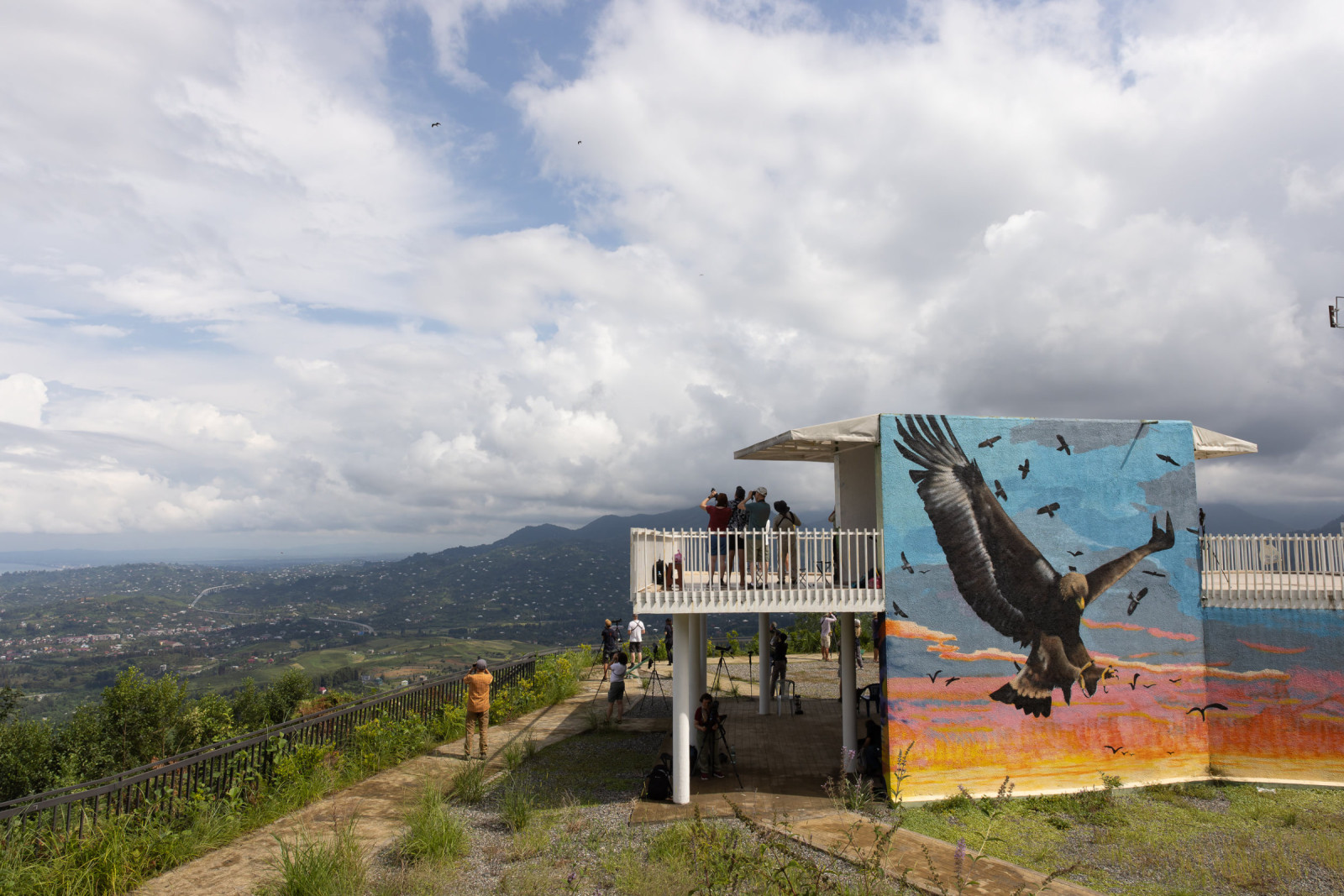Opis
Bird of prey hot spot! The foothills of the Lesser Caucasus along the Black Sea Coast in Georgia forms on one of the world’s biggest bottlenecks for migrating raptors. From the watchpoint on top of a hill in Sakhalvasho you have the best view to witness one of the most spectacular raptor migrations in the world.
Sakhalvasho offers a stunning panorama over both Batumi city and the foothills of Kobuleti. It overlooks the sea and the botanical garden on one side, and Mtirala national park on the other side. It has been Batumi Raptor Count’s first count station since 2008. Its strategic location as the highest point in the landscape and exactly where the Colchis Mountains hit the sea, make this an exceptional place to watch raptors and other soaring birds migrating through the bottleneck at its narrowest point. With government support, the flattened hilltop now has a concrete shelter and platform, to serve as an excellent watchpoint. It is located within close reach of several guesthouses, but getting there requires an uphill walk of 10 to 15 minutes. Facilities on the watch-point are basic but include a toilet and shelter.
In late August, the Trzmielojad season starts, and most years see one or two 100,000+ days. Early in the season, it pays off to arrive around sunrise, when hundreds or thousands of harriers (mostly błotniak łąkowy and błotniak stawowy) pass through. From the second week of September onwards, the migration becomes more diverse, with more and more kania czarna and orzełek joining the flocks, and krogulec krótkonogi and błotniak stepowy adding spice to the mix. Very enjoyable are also the żołnas, with thousands and thousands passing through. The third week of September is the best time to see one of Batumi’s main highlights: the trzmielojad czubaty (Crested Honey-buzzard). This rare migrant from east Siberia passes through Batumi in small numbers. Later September the bulk of the migration is made up of myszołów wschodniokaukaski and eagles.
Szczegóły
Dostęp
The Sakhalvasho viewpoint is located about 12 km north of Batumi (about a 30 minute drive). When you come by car from Batumi, take the main coastal road north (direction Kobuleti and Poti). Continue passing Makhinjauri and just after the tunnel take the first road on the right that takes you up, next to the sign 'Sakhalvasho'. Follow the road to up to the school, park here if possible, and take the gravel road below the school to the right on foot. The road in some places is very steep.
You can fly to Batumi airport (usually one stop in Istanbul) with Turkish Airlines or Pegasus from Europe and some other countries. From the airport, you can be in Sakhalvasho within 30 minutes by car. It is also possible to take a regular taxi to the school of Sakhalvasho which should not be expensive.
Teren i siedlisko
Góry , Dolina , Las , MorzeWarunki
Skalisty , PagórkowatyTrasa dookoła
NieCzy luneta będzie przydatna ?
TakUdany sezon obserwacyjny
JesieńNajlepszy czas na wizytę
Jesienne migracjeTrasa
Droga nieutwardzonaPoziom trudności szlaku pieszego
Średnio wymagający spacerDostępne
PieszoCzatownia/platforma obserwacyjna
TakDodatkowe informacje
Batumi Raptor Count, or BRC, is a nature conservation NGO that works to monitor and conserve the 1,000,000+ birds of prey that migrate every autumn through the Batumi Bottleneck. A young and forward thinking organisation, BRC has been operating from the Black Sea City of Batumi, in the Republic of Georgia, ever since 2008 when it has started the raptor-migration count covering the full autumn season. For more info and the list with sightings see the link below.




